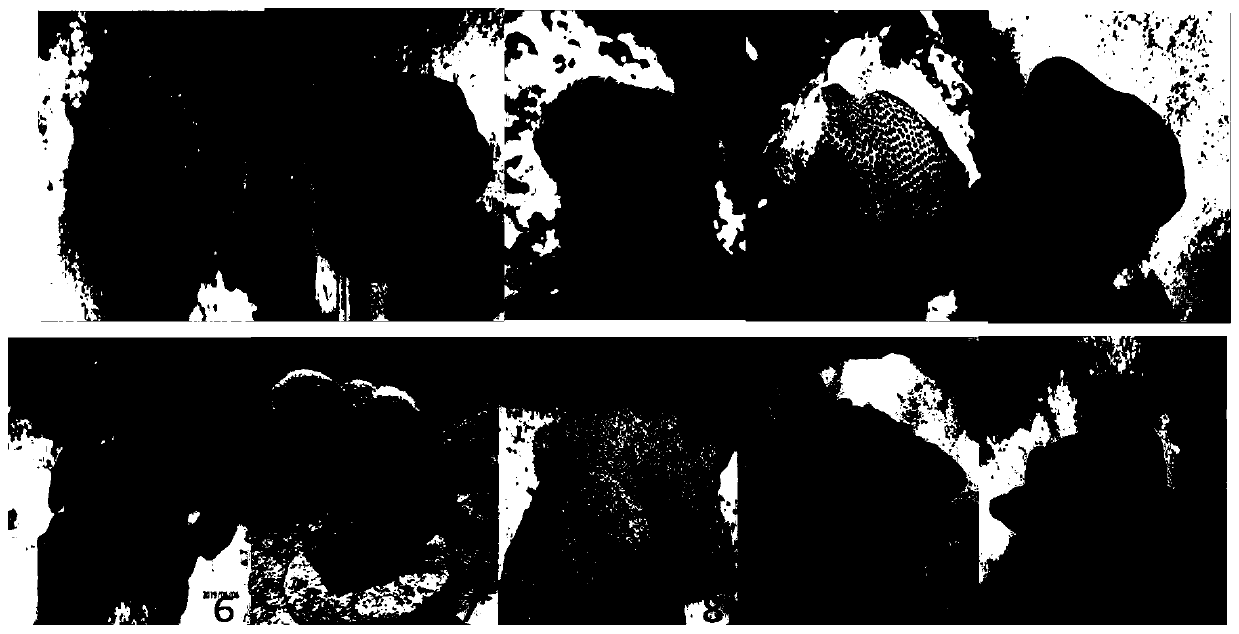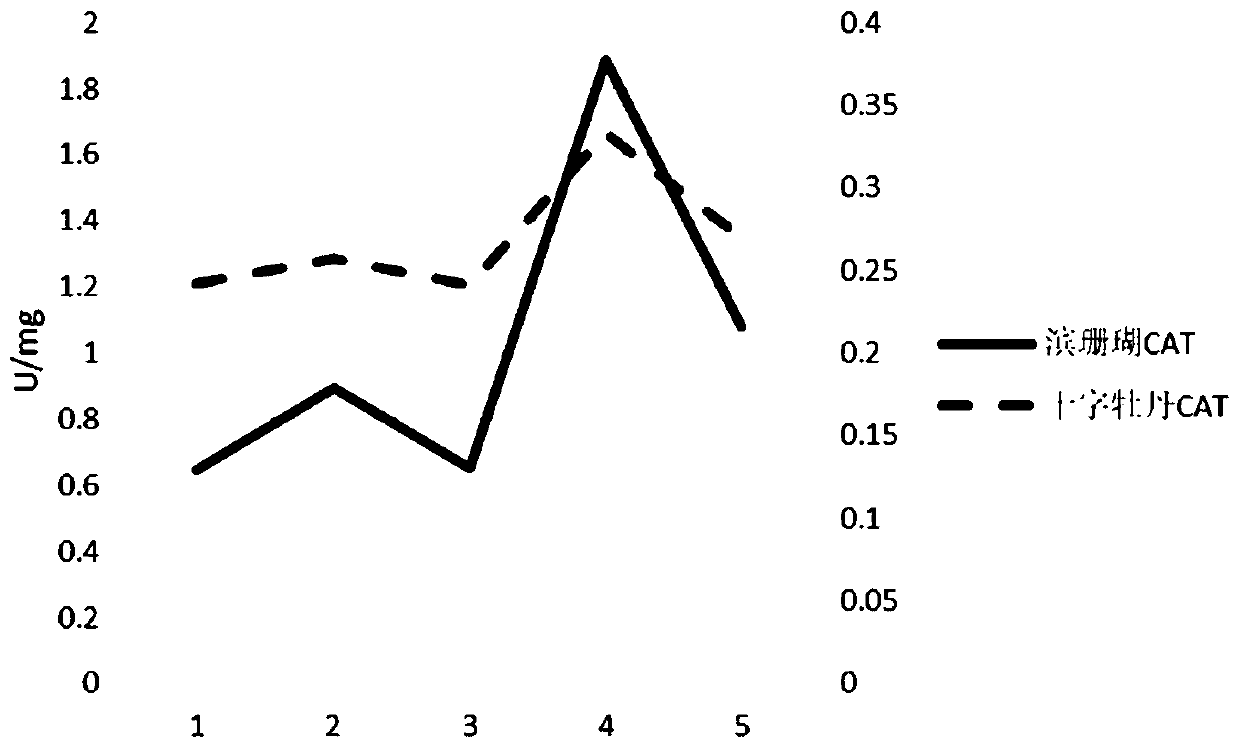Method for assessing heat resistance of coral
A heat-resistant, coral-based technology, applied in the direction of measuring devices, material analysis through optical means, instruments, etc., to achieve high precision, easy to use, and simple operation
- Summary
- Abstract
- Description
- Claims
- Application Information
AI Technical Summary
Problems solved by technology
Method used
Image
Examples
Embodiment 1
[0032] Taking Porites lutea and Pavona decussata as examples, it involves the following three steps:
[0033] (1) Select corals under the ideal growth state, and set the water quality conditions of the control group culture tank (T: 26°C, KH: 7.0±0.3, pH: 8.2±0.1, Ca 2+ :400±15ppm, Mg 2+ :1400±20ppm, PO 4 3- 4 + 2 - 3 - ≈0ppm, light using 250W Metal halogen lamp+4T5HO, ODYSSEA), the collected coral individuals were adapted to the culture tank for 20 days, and the newly hatched brine shrimp (Artemia salina) was fed twice a week;
[0034] (2) Put the coral samples into the coral tank and adapt to recovery for 10-14 days.
[0035] (3) The stress temperature is set to 34°C, and the heat stress adopts a gradient temperature rise, which increases by 1°C in 12 hours, and acclimates for 3 days after rising to the target temperature;
[0036] (4) Using Diving-PAM underwater fluorometer (diving PAM underwater fluorometer) (WALZ, Germany) to measure and record the maximum light qu...
Embodiment 2
[0046] Taking Porites lutea and Pavona decussata as examples, it involves the following three steps:
[0047] (1) Select corals under the ideal growth state, and set the water quality conditions of the control group culture tank (T: 26°C, KH: 7.0±0.3, pH: 8.2±0.1, Ca 2+ :400±15ppm, Mg 2+ :1400±20ppm, PO 4 3- 3 + 2 - 3 - ≈0ppm, light using 250W Metal halogen lamp+4T5HO, ODYSSEA), the collected coral individuals were adapted to the culture tank for 20 days, and the newly hatched brine shrimp (Artemia salina) was fed twice a week;
[0048] (2) Set the temperature of the acclimation tank at 32°C for acclimatization, heat stress using a gradient temperature increase, 1°C in 12 hours, and acclimation for 3 days after reaching the target temperature;
[0049] (3) Transfer to 26 ℃ breeding tank, the water quality index is the same as that of the control group, and carry out secondary stress after 14 days of recovery;
[0050] (4) Set the secondary stress temperature to 34°C, he...
PUM
| Property | Measurement | Unit |
|---|---|---|
| cover factor | aaaaa | aaaaa |
Abstract
Description
Claims
Application Information
 Login to View More
Login to View More - Generate Ideas
- Intellectual Property
- Life Sciences
- Materials
- Tech Scout
- Unparalleled Data Quality
- Higher Quality Content
- 60% Fewer Hallucinations
Browse by: Latest US Patents, China's latest patents, Technical Efficacy Thesaurus, Application Domain, Technology Topic, Popular Technical Reports.
© 2025 PatSnap. All rights reserved.Legal|Privacy policy|Modern Slavery Act Transparency Statement|Sitemap|About US| Contact US: help@patsnap.com



